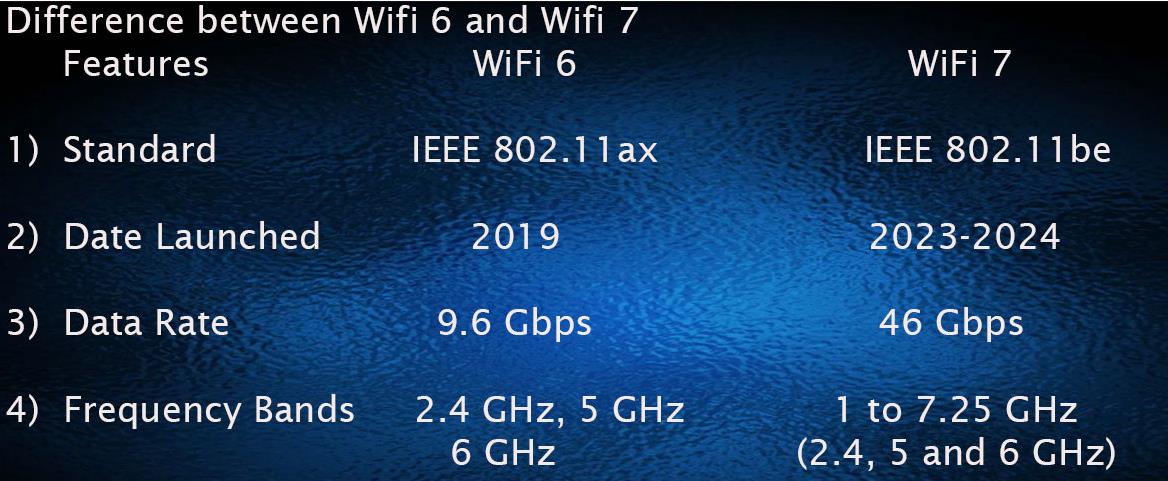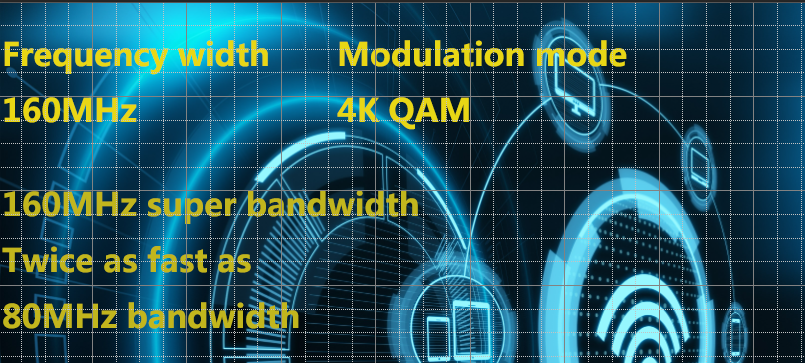
By admin Date of issue: May 25,2023
Wi-Fi 7, also known as IEEE 802.11be, is the next generation of wireless networking technology currently under development. As of September 2021, to the best of my knowledge, Wi-Fi 7 has not been officially released or standardized by the Institute of Electrical and Electronics Engineers (IEEE). As such, I don't have specific details on the exact capabilities or features of Wi-Fi 7.
However, Wi-Fi 7 is expected to build on the advancements made by its predecessor, Wi-Fi 6 (802.11ax), and offer higher speeds, lower latency, greater capacity, and greater efficiency. Some of the potential features and improvements that have been discussed for Wi-Fi 7 include:
Higher data rates: Wi-Fi 7 is expected to support faster data transfer rates than previous generations, potentially reaching multi-gigabit speeds.
Increased Efficiency: New technology designed to optimize spectrum utilization and improve overall network efficiency, enabling better performance in high-density environments.
Lower latency: Wi-Fi 7 promises to reduce network latency, making it more suitable for real-time applications such as online gaming, video streaming, and virtual reality.
Enhanced security: Wi-Fi 7 may implement new security mechanisms to provide greater protection from cyber threats and attacks.

What is 4k-QAM
4K-QAM stands for 4K Quadrature Amplitude Modulation. It is a modulation scheme used in digital communication systems to transmit data over radio frequencies. QAM is a method of combining two amplitude modulated (AM) signals, called in-phase (I) and quadrature (Q) components, to carry data.
In 4K-QAM, the number "4K" refers to the total number of symbols or signal states that can be transmitted. "K" stands for a power of 2, so in this case, K = 2^12, i.e. 4K equals 4096. Therefore, 4K-QAM can transmit 4096 different signal states.
Each signal state in 4K-QAM represents a specific combination of magnitude and phase. By varying the amplitude and phase of the I and Q components, 4K-QAM modulation schemes can encode and transmit more data than lower-order QAM schemes. As the number of signal states increases, more data can be transmitted per symbol, resulting in higher data rates.
4K-QAM is commonly used in modern communication systems, including wireless standards such as Wi-Fi and cellular networks, to achieve higher .
In general, if 4K-QAM is to be implemented in a future Wi-Fi standard such as Wi-Fi 7, it will mean a modulation scheme that supports 4,096 (4K) different signal states. This enables higher data rates and higher spectral efficiency compared to lower order QAM schemes.
By leveraging 4K-QAM, Wi-Fi 7 has the potential to achieve higher throughput and improved performance in high-density environments. The increased number of signal states allows more bits to be transmitted per symbol, enabling faster data rates within the available bandwidth.

For more products please visit : https://www.wallystech.com/product.html
Follow us in the Youtube :![]() https://www.youtube.com/channel/UClmu7LBz_OWxe2VckkQr3tw
https://www.youtube.com/channel/UClmu7LBz_OWxe2VckkQr3tw
Our product support OpenWRT, please visit our gitbub link for the code : https://github.com/wallystech
Wallys has over 15 years of research and development experience, experienced in linux, wifi protocol and other aspects, Qualcomm chip development drivers, kernel and other important software development, modification and compilation, to meet customers' different wifi functional needs.
We have a strong hardware design team, and experienced people know that the most difficult part of hardware design is RF circuit design, baseband, etc., while wallys team made 0 error to achieve signal integrity, such as frequency conversion of network card, from 2.4G to 900M, which is a technological breakthrough.
Clients: TIP,Facebook, Openwrt, etc
ADD:116 ChengYang Road, XiangCheng District, SuZhou City,JiangSu Province, China
Skype:sunbenku1
Email:support@wallystech.com
Copyright © 2020 Wallys Communications (Suzhou ) Co., LTD Sitemap



